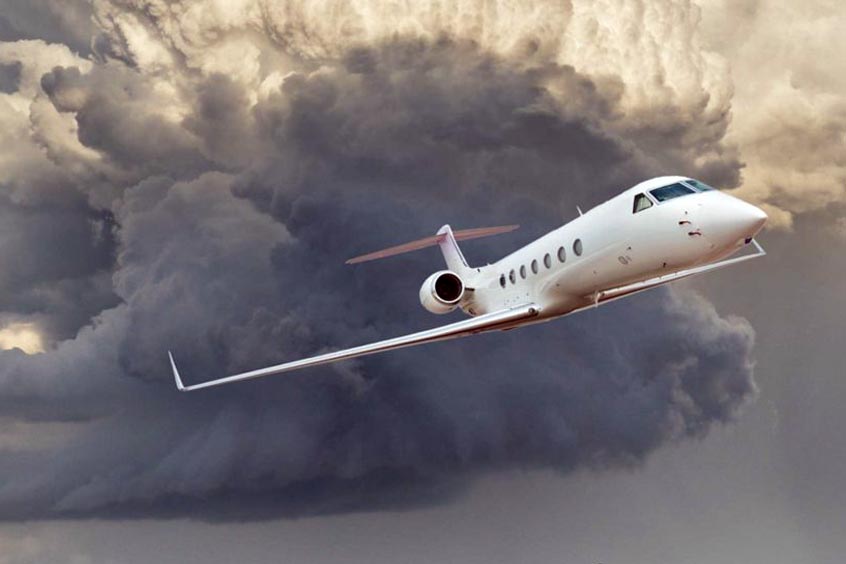ACE 2026 - The home of global charter.
 The bimonthly news publication for aviation professionals.
The bimonthly news publication for aviation professionals.



The latest, most advanced addition to the IntuVue family expands Honeywell's advanced weather radar capabilities to more aircraft, helping pilots safely navigate inclement weather, keep passengers comfortable and get them to their destinations on time.
The intuitive system builds upon the technology and success of Honeywell's existing IntuVue RDR-4000 weather radar system, found in larger commercial and military aircraft, and expands its reach to include additional smaller platforms like regional and business jets as well as helicopters. Now, more pilots, passengers and operators can experience IntuVue, which is the most technically advanced weather radar available and the only radar to depict a vertical view of storms. This provides pilots with an intuitive display of weather along a flight path to help choose the safest, most comfortable route.
Weather-related delays and cancellations cost the aviation industry billions of dollars every year, while turbulence-related incidents impact passenger comfort and safety. The RDR-7000 weather radar can accurately predict the presence of lightning or hail, so pilots can avoid hazardous weather. Beyond weather conditions, the radar can also detect turbulence up to 60 nautical miles ahead, enabling the crew to avoid the turbulence or alert the passengers sooner.
Like the existing IntuVue RDR-4000, the new radar system brings the proven technology of 3-D volumetric scanning, analysing a storm cloud in 17 different scans from the ground up to 60,000 ft, providing a 3-D view of the entire storm cell.
“Weather is difficult to predict, and pilots continually run the risk of encountering unexpected weather like hail or thunderstorms, which can impact the safety and comfort of all on board,” says Honeywell Aerospace Electronic Solutions president Stevan Slijepcevic. “The RDR-7000 reduces this risk by more than 50 per cent using the new and improved automated mode, which helps pilots focus on upcoming weather hazards and reroute decisions instead of operating the radar.”
The RDR-7000 provides fully automatic operation without requiring pilots to manually point the antenna to analyse a storm, resulting in improved weather situational awareness with reduced cockpit workload.
Business jet and regional carrier aircraft operators with Honeywell legacy radar will be able to upgrade to the RDR-7000 starting in April 2020. The radar will be available for Dassault Falcon 900; Bombardier Global 5000 and Express; Bombardier De Havilland Dash 8-100; Bombardier Challenger 600 and 601; Cessna Citation 750 X, 650 (including Citation III and VII), 560, V, Ultra, and 550 Bravo; Learjet 40 and 45; Embraer ERJ 135 and 145; Hawker 800; and ATR 42 and 72 aircraft. Honeywell also plans to roll this out to helicopter, military and other business and general aviation aircraft in Q2 of 2020.
The company has also released a micro power unit (mPU) for business and private airplanes, helicopters and advanced ground vehicles deliver many of the same benefits of APUs, such as major savings from reduced fuel burn coupled with mobile power on the ground for critical aircraft systems such as air conditioning and avionics. The mPU provides power autonomously in any ground environment, drastically decreasing fuel burn while increasing overall aircraft efficiency and hull value.
“By expanding our line of trusted and reliable solutions to include the mPU, Honeywell can better serve turboprop and light jet owners and operators looking to increase passenger comfort and reduce overall operating costs,” says president, engines and power systems Brian Sill. “The mPU adds value to new and existing aircraft in a small, lightweight and quiet package.”
It is compact enough to fit in aircraft that have space limitations while still providing enough power to operate air conditioning, charge batteries, conduct flight planning and assist main engine start without using additional power sources. When compared with using the main engines to power aircraft systems, the mPU can result in an 80 per cent reduction in fuel burn while on the ground. It also avoids the hassle of securing costly or simply unavailable ground power, particularly in remote locations.
The mPU adds value to aircraft by introducing a new, low-cost and mobile power source for ground operations. Thanks to its efficient design, it also removes the need to use the main engines to access basic aircraft functions. This can help unlock new routes to more remote areas where power is not readily available, greatly increasing an aircraft's overall utility.